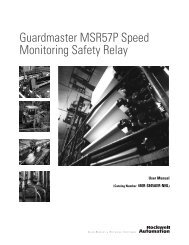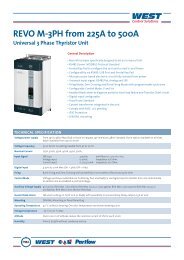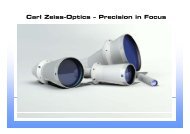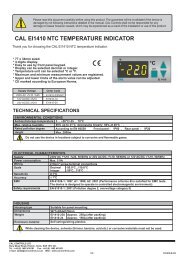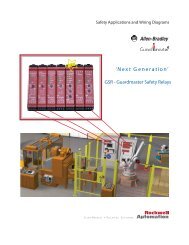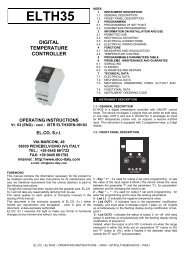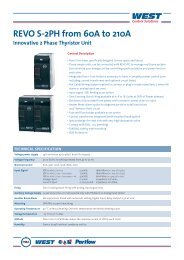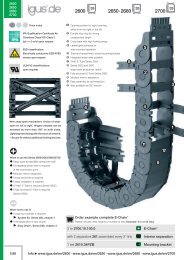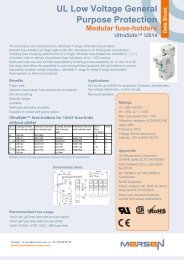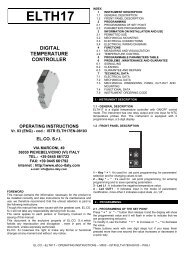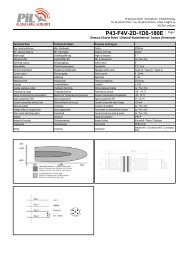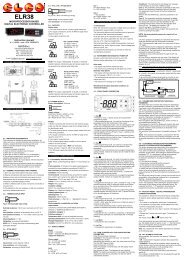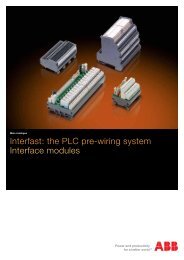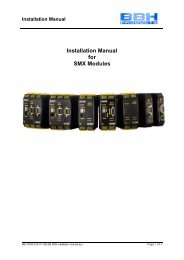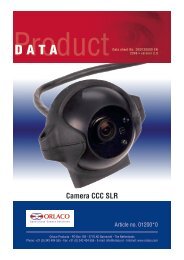SG4E Full Rev01.pdf - Datasensor
SG4E Full Rev01.pdf - Datasensor
SG4E Full Rev01.pdf - Datasensor
You also want an ePaper? Increase the reach of your titles
YUMPU automatically turns print PDFs into web optimized ePapers that Google loves.
7<br />
SG4-E INSTRUCTION MANUAL<br />
7.9.5 Reduced Resolution<br />
Reduced Resolution is a particular kind of floating blanking in which more than one object<br />
can intercept each a defined number of beams with the ESPE remaining in normal operation.<br />
The number that follows indicates how many adjacent beams can be intercepted by the<br />
object to allow the light curtain to remain in Normal Operation. For example, with Reduced<br />
Resolution 2 the object intercepts 1, 2 or no beams and the light curtain remains in Normal<br />
Operation. This function can be set only by means of ACM.<br />
NB: This function affects the effective resolution of the light curtain and the user is<br />
warned about it.<br />
7.9.6 Dimension<br />
This value indicates the size of blanking zone.<br />
This function can be set only by means of ACM.<br />
7.9.7 Position<br />
This value indicates the first beam of the blanking zone, starting from the bottom of the ESPE<br />
(the bottom of the ESPE is the side with the leds and the push buttons).<br />
Since in floating blanking configuration zones haven’t a fixed position, it is valid only in fixed<br />
blanking.<br />
This function can be set only by means of ACM.<br />
7.9.8 Tolerance<br />
There are 2 types of tolerance: position and dimension.<br />
Position Tolerance<br />
It indicates the number of beams in blanking zone that can be intercepted above and below<br />
the blanking zone without making the OSSDs switch off.<br />
In presence of wide vibrations, it is useful to use this function in order to avoid the changing<br />
of the OSSDs’ status.<br />
Dimension Tolerance<br />
It indicates how many beams the object can be smaller than the number fixed by the value<br />
Dimension. It’s a negative quantity.<br />
It is useful when an object intercepts half optic; in this case a little vibration can make the<br />
OSSDs change status.<br />
Tolerance can be selected via wire or ACM.<br />
If the user wants to select this function with ACM, he must have at least one blanking zone;<br />
then he can choose Position or Dimension Tolerance. Next tables shows the different cases<br />
on a blanking zone of 3 beams.<br />
If the light curtain is configured with ACM it doesn’t take care if the Tolerance has been<br />
selected by means of Tolerance wire (pin 9 of M12-12 poles - RX).<br />
56



